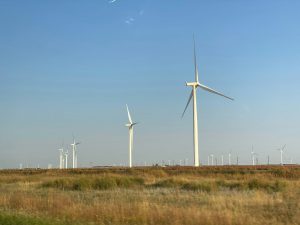Underground Transportation Networks of the Future
The future of transportation is constantly evolving, with new innovations and technologies emerging every day. As our cities become more congested and polluted, there is a growing need for efficient and sustainable modes of transportation. One emerging solution that is gaining traction is the development of underground transportation networks. These futuristic systems offer the potential to revolutionize the way we travel, offering faster and more convenient options for commuters and reducing traffic and carbon emissions. In this article, we will explore the concept of underground transportation networks and their potential impact on the future of transportation.
What are Underground Transportation Networks?
Underground transportation networks, also known as subterranean transportation systems, are underground infrastructures used to transport people or goods. These networks can be built using various methods, such as tunnels or underground tubes, and can include modes of transportation such as trains, buses, or even personal hovercrafts. While underground transportation has been used in various ways for centuries, modern technology and advancements have enabled the development of more sophisticated and efficient underground networks.
How Do They Work?
The specific mechanics of an underground transportation network depend on the type of system being used. One popular method is the development of underground tube networks, which involve the use of pneumatic tubes or pressurized air to propel pods or capsules through a series of tubes. This technology, which is often referred to as Hyperloop, has been gaining traction in recent years, with companies like Tesla and Virgin Hyperloop One investing in its development.
Another approach to underground transportation is the use of underground train systems, such as the London Underground or the New York Subway. These systems use traditional rail technology, but with the added benefit of being located underground, which allows for faster speeds and reduced congestion compared to above-ground options. However, building and maintaining these systems can be costly and complex, making them less feasible for some cities.
The Benefits of Underground Transportation Networks
Underground transportation networks offer a range of benefits that make them a promising solution for the future of transportation. Some of the key advantages include:
Reduced Congestion
One of the biggest advantages of underground transportation networks is their ability to reduce congestion on roads and highways. With fewer cars on the road, traffic delays and congestion can be significantly decreased, making commutes faster and more efficient. This not only benefits the individual traveler but also has a positive impact on the environment, as reduced congestion means lower emissions from vehicles.
Faster Travel Times
Underground transportation networks have the potential to offer faster travel times compared to traditional above-ground modes of transportation. With dedicated routes and fewer stops, these networks can travel at higher speeds, making them an attractive option for commuters looking to save time.
Improved Safety and Reliability
Due to the separation from other modes of transportation, underground networks offer a higher level of safety and reliability for commuters. With no worry about unexpected traffic or delays, individuals can rely on these systems to get them to their destination on time.
Sustainability
Another benefit of underground transportation networks is their potential for sustainability. By reducing the number of cars on the road and using alternative forms of energy, these systems have the potential to lower carbon emissions and contribute to a cleaner and healthier environment.
The Future of Underground Transportation Networks
The idea of underground transportation may seem like something out of a science fiction movie, but the reality is that these networks are becoming more and more prevalent in cities around the world. As technology continues to advance, we can expect to see even more sophisticated and efficient underground transportation systems being developed.
However, the development of these networks also comes with its challenges. The high costs of construction and maintenance, as well as potential risks to existing infrastructure, are all factors that must be carefully considered when implementing underground transportation networks. Additionally, public opinion and support will also play a crucial role in the success of these systems.
Conclusion
In conclusion, underground transportation networks offer a promising solution for the future of transportation. With the potential to reduce congestion, increase travel speeds, and contribute to a more sustainable future, these networks have the power to revolutionize the way we travel. However, it will take a collaborative effort from both the public and private sectors to turn this vision of the future into a reality.







